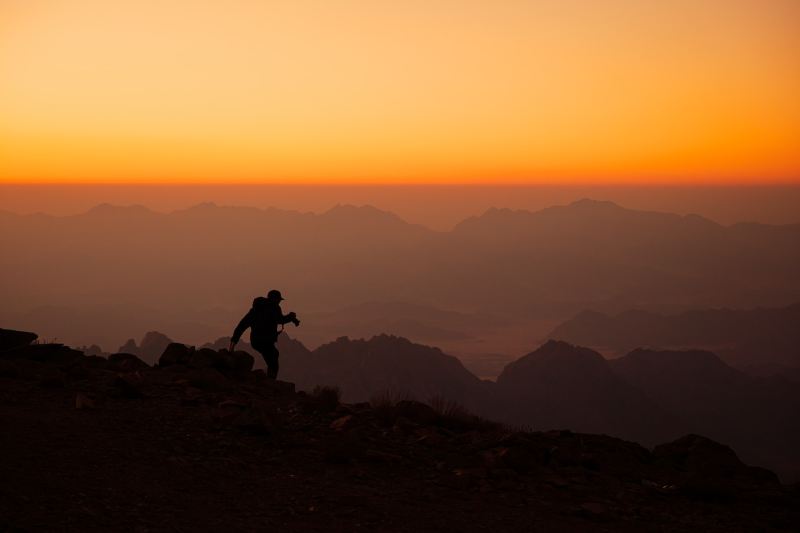I most often cover national parks in the U.S., but today, I’d like to jump across the northern border and rank a few of my favorite Canada national parks. From turquoise waters to coral beaches and arctic landscapes, Canada has so much to explore. The next time you visit, here are five of my favorite national parks in Canada and what you can do there.
Banff National Park in Alberta

When talking about Canada national parks, I can’t not mention Canada’s very first national park. Banff was established in 1885 and is now a UNESCO Canadian Rocky Mountain Parks World Heritage Site. This area is well known for Lake Louise and Moraine Lake, which have gorgeous turquoise waters surrounded by huge peaks.
What to do at Banff National Park
Hiking is one of the top activities to do here. While you explore over 1,600 kilometers of trails, keep an eye out for elk, bears, and even mountain goats. Six Glaciers Trail is always a favorite, and you can even visit a backcountry teahouse for some refreshments. Banff National Park is also excellent for its scenic drives. The Icefields Parkway between Banff and Jasper has some stunning views of the glaciers, mountains, and lakes.
In the winter, you’ll have to swing by Lake Louise Ski Resort and Sunshine Village for skiing and snowboarding. You can also go on guided tours to walk along frozen waterfalls or climb ice-covered cliffs in Johnston Canyon. There are a bunch of shimmering ice caves that you can explore up close, and it’s bound to be an experience you’ll never forget.
Bruce Peninsula National Park in Ontario

If you’re planning a trip toward Ontario, don’t miss out on Bruce Peninsula National Park. This area has some of the best views of the Niagara Escarpment as well as the clear waters of Georgian Bay. With dramatic cliffs that grow rare white cedars, this national park won’t fail to impress.
What to do at Bruce Peninsula National Park
Since the park is a part of the Bruce Peninsula Dark Sky Preserve, this area is one of the best places in Ontario to stargaze. Here, you’ll be able to see some of Mother Nature’s most stunning natural phenomena, including all of your favorite constellations, meteor showers, and sometimes even the Northern Lights.
Hiking the Grotto Trail, you’ll find a stunning limestone sea cave. You can also drive along the Georgian Bay or explore underwater shipwrecks and rock formations off the coast.
Gros Morne National Park in Newfoundland and Labrador

There aren’t many places in the world where you can peek into what was the earth’s interior, but you can at the Tablelands at Gros Morne National Park. This area is set by the Atlantic and features lots of exposed orange-brown mantle rock, which you can hike across. While there is no ongoing volcanic activity today, this is the perfect place to learn about plate tectonics because it’s often described as a “textbook” location of how continents interact.
What to do at the Tablelands
The Tablelands Trail is one of the best ways to see the highlights of the park. To make the most of it, visit in the summer so that you can take part in one of the many guided hikes. In the winter, you’ll be able to experience snowshoeing or cross-country skiing. No matter the time of year, there are also many opportunities to learn about the many Indigenous peoples whose culture and history are closely tied to the Gros Morne National Park area.
Quttinirpaaq National Park in Nunavut

Located in the northernmost region of Canada on Ellesmere Island, this is one of the most remote parks in the world. Quttinirpaaq means “Top of the World” in Inuktitut, and that name really suits it. At just 450 miles from the North Pole, it’s the second northernmost park in the world after Northeast Greenland National Park. It also holds the title for Canada’s second-largest national park after Wood Buffalo National Park.
What to do at Quttinirpaaq National Park
If you want unparalleled views of arctic landscapes, this is the park to visit, but you’ll need a backcountry permit. Here, you can see glaciers, fjords that lead to the Arctic Ocean, a polar desert, and several mountains, including Barbeau Peak, which is Canada’s highest mountain east of the Rockies. Despite the harsh conditions, you might just spot a variety of wildlife, including muskoxen, arctic hares, caribou, and lemmings.
The land is integral to the Inuit people’s identity and traditions, so the park features many initiatives to celebrate its Indigenous connections through exhibits, workshops, and expert-guided tours. There are several Thule culture sites to explore within the park, including hunting camps, tool exhibits, and shelters made from stone and whalebone.
Nahanni National Park Reserve in the Northwest

If waterfalls are your thing, head straight to the Nahanni National Park Reserve. This national park has so many things to offer, especially the Virginia Falls, which are twice the height of Niagara Falls. The South Nahanni River, which flows through the park, is famous for its whitewater rapids, as well as the Four Great Canyons, which take you through limestone bedrock. You can also see the Tufa Mounds, which are mineral deposits created by calcium-rich hot springs.
What to do at Nahanni National Park Reserve
When I think about Nahanni National Park, I think water sports. There are so many fun water activities to do here, including the option to do a multiday whitewater rafting expedition. Hiking the Virginia Falls Rim Trail is also amazing. For a challenge, try the Náįlįcho Loop. For the best views of the park, you can also book a sightseeing flight.
Canada national parks have so much to offer any kind of traveler. For families or groups looking for an easy introduction to Canada’s national park system, try Banff National Park. Water lovers will enjoy Bruce Peninsula National Park or Nahanni National Park. For those looking for a remote or backcountry experience, the icy Quttinirpaaq National Park and the Gros Morne National Park can’t be beat. For more information about these Canada




